
- $ 0.00 0 items

Wandering Albatross Photos, Pictures, Prints
View wandering albatross photos, license wandering albatross stock pictures, and buy stunning wandering albatross prints by award winning professional photographer Jon Cornforth. To license an image for editorial or commercial use, click on the License Image button and fill out the form. To purchase a fine art print, select your image size and presentation style before clicking on the Buy Print button.
Diomedea exulans
The wandering albatross or goonie (Diomedea exulans) is a large seabird which lives in a circumpolar range in the Southern Ocean. With the longest wingspan of any bird, this is one of the most far-ranging birds. Some wandering albatrosses have covered more than 120,000 km (or 75,000 miles) in one year.
This bird’s wingspan measures from 2.51 to 3.5 m (8 ft 3 in to 11 ft 6 in), with a mean span of 3.1 m (10 ft 2 in) in the Bird Island, South Georgia colony. Meanwhile, in Malabar, New South Whales, the average wingspan is 3 m (9 ft 10 in).
On the Crozet Islands, adults averaged 3.05 m (10 ft 0 in) in wingspan. Finally, two giants have reportedly measuring 4.22 m (13 ft 10 in) and 5.3 m (17 ft 5 in). As a result of this bird’s massive wingspan, it is capable of remaining in the air without flapping its wings for several hours at a time (travelling 22 m for every metre of drop).
This bird’s plumage varies with age. Juveniles start out chocolate brown. However, they become whiter as they age. Adults have white bodies with black and white wings. Males have whiter wings than females. Meanwhile, they display a faint peach spot on the side of the head. Their large bill is pink, as are the feet, and they have a salt gland that is situated above the nasal passage and helps desalinate their bodies. They need this because of the high amount of ocean water that they drink.
Though this species breeds on South Georgia Island, Crozet Islands, Kerguelen Islands, Prince Edward Islands, and Macquarie Island, it spends most of its life in flight.
Explore with Cornforth Images.
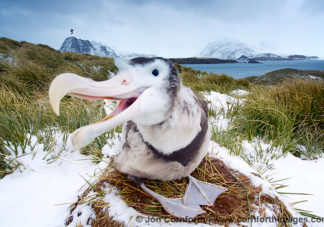
Prion Island Wandering Albatross 10
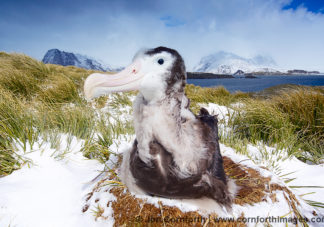
Prion Island Wandering Albatross 11
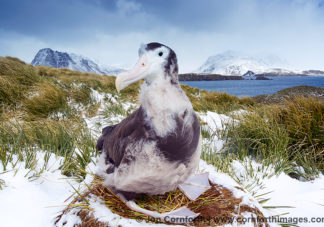
Prion Island Wandering Albatross 13
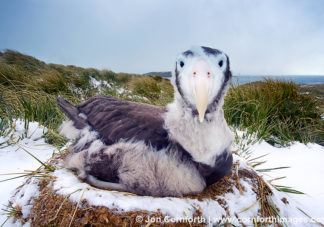
Prion Island Wandering Albatross 14

Prion Island Wandering Albatross 15

Prion Island Wandering Albatross 16
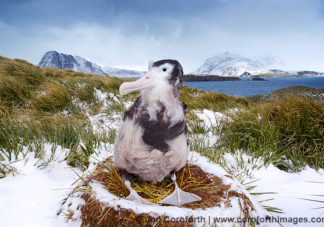
Prion Island Wandering Albatross 18
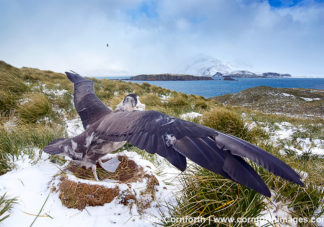
Prion Island Wandering Albatross 22
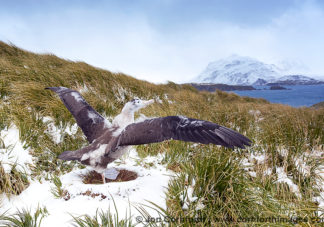
Prion Island Wandering Albatross 19

Prion Island Wandering Albatross 20
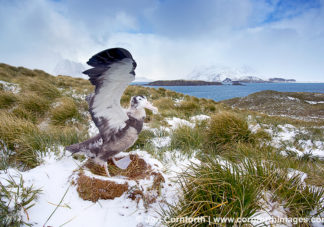
Prion Island Wandering Albatross 23
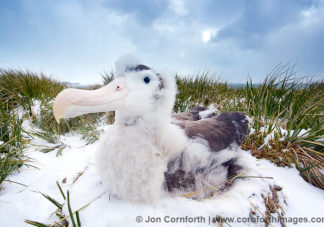
Prion Island Wandering Albatross 24

Prion Island Wandering Albatross 25
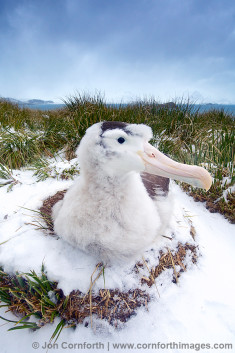
Prion Island Wandering Albatross 26
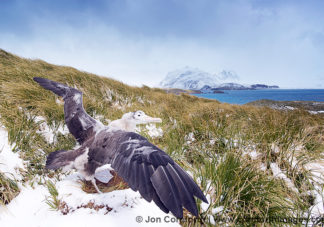
Prion Island Wandering Albatross 28

Prion Island Wandering Albatross 30

Prion Island Wandering Albatross 31

Prion Island Wandering Albatross 32
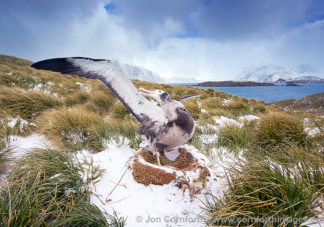
Prion Island Wandering Albatross 33
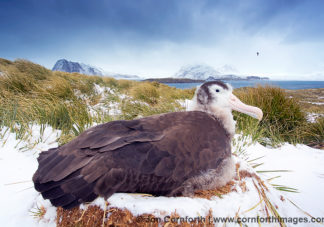
Prion Island Wandering Albatross 36
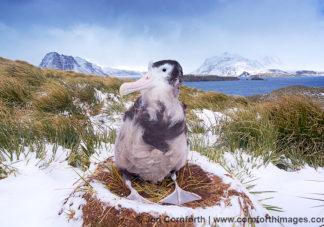
Prion Island Wandering Albatross 40

Prion Island Wandering Albatross 41
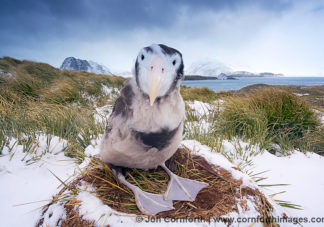
Prion Island Wandering Albatross 42
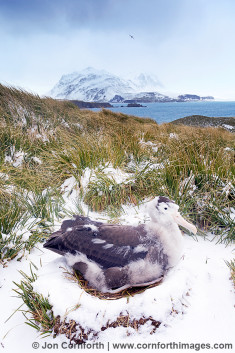
Prion Island Wandering Albatross 43

Wandering Albatross
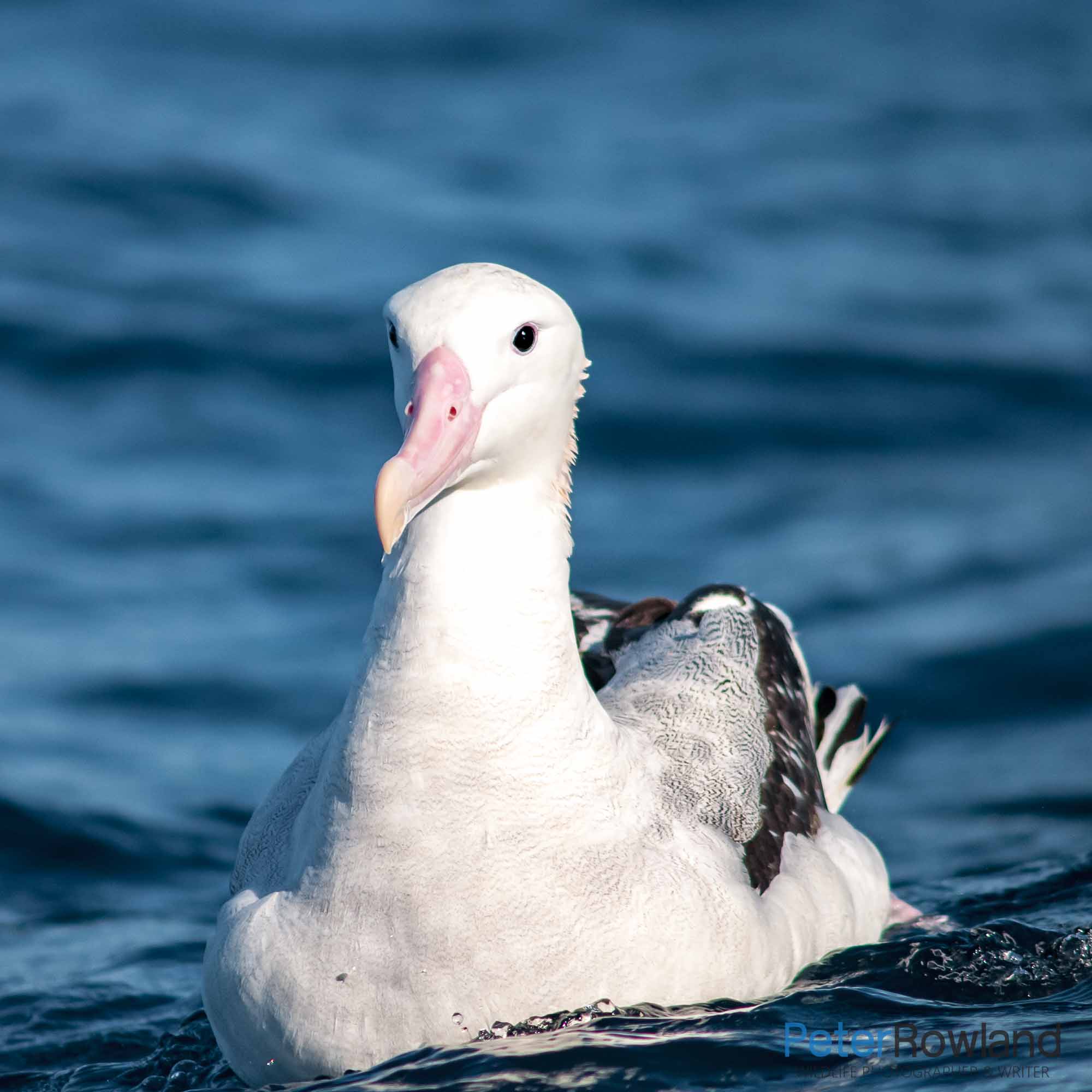
Scientific Name: Diomedea exulans
Size: 80 to 135 cm Total Length; c. 200 cm Wingspan
What does it look like?
Its large size and white plumage, with fine black wavy lines on the breast neck and upper back, and mottled with black on the back, readily distinguish it. The Wandering Albatross has the longest wingspan of all bird species.
Where is it found?
The Wandering Albatross breeds on subantarctic islands, beginning in early December, but spends the majority of its life soaring low above the southern oceans.
What are its habitats & habits?
No other species of bird has grasped the admiration and respect of birdwatchers and fishermen alike. The Wandering Albatross may spend several days following a ship, gliding effortlessly on long slender wings, in all but the calmest winds. Birds will readily scavenge from fishing boats and the surface of the water, but squid and fish are the preferred food. This penchant for squid has made the bird at risk from the longlines that are used by ocean trawlers. The albatross becomes hooked and drowns as they take the bait and are then dragged along behind the boat.

This species features in my book Australia’s Birdwatching Megaspots
You may also be interested in ...

White-tailed Spider

Gidgee Skink
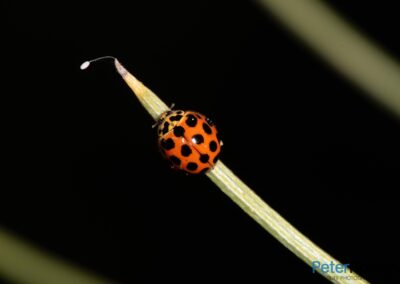
Common Spotted Ladybird

Eastern Bristlebird
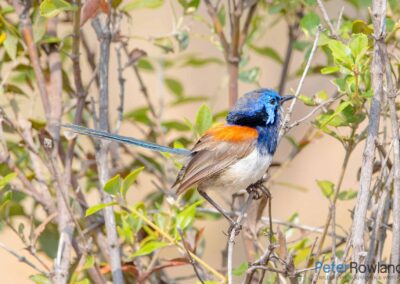
Blue-breasted Fairywren

Queensland Fruit Fly
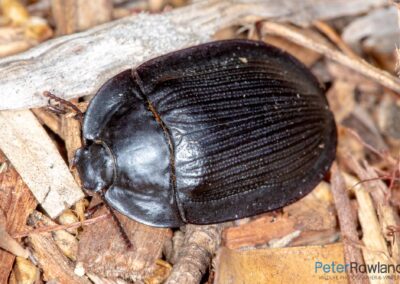

Pie-dish Beetle

Green Rosella
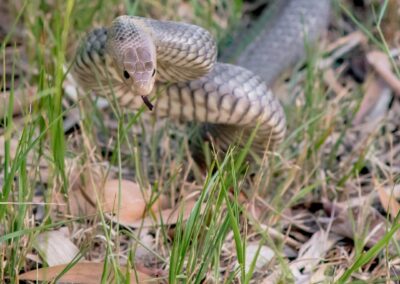
Common Brown Snake

Noisy Miner

Rufous Bettong

Crimson Rosella

Southern Leaf-tailed Gecko

Superb Parrot

White-throated Needletail

Banana Stalk-fly

Major Mitchell’s Cockatoo

Fan-tailed Cuckoo
Pin it on pinterest, share this page....
If you found this page useful, please share it with your friends
Wandering Albatross Photos
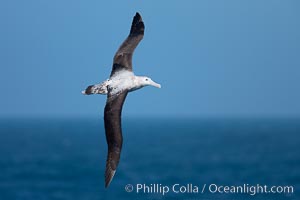

Woods Hole, Mass. — Wandering albatrosses, which are an iconic sight in the Southern Ocean, are highly adapted to long-distance soaring flight. Their wingspan of up to 11 feet is the largest known of any living bird, and yet wandering albatrosses fly while hardly flapping their wings. Instead, they depend on dynamic soaring—which exploits wind shear near the ocean surface to gain energy—in addition to updrafts and turbulence.
Now researchers, including Philip Richardson , a senior scientist emeritus in Physical Oceanography Department at the Woods Hole Oceanographic Institution (WHOI), are unlocking more clues about exactly how wandering albatrosses are such amazing flyers.
In a new paper analyzing GPS tracks of wandering albatrosses, researchers have found that the birds’ airspeed increases with wind speed up to a maximum airspeed of 20 meters per second (m/s; 45 mph). Researchers developed a model of dynamic soaring, which predicts that the birds could fly much faster than 20 m/s. The paper concludes that the birds limit their airspeed by adjusting the turns in their trajectories to be around 60°, and that in low winds the birds exploit updrafts over waves to supplement dynamic soaring.
“We hypothesize that wandering albatrosses limit their maximum across-wind airspeeds to ~ 20 m/s in higher wind speeds (and greater wind turbulence), probably to keep the aerodynamic force on their wings during dynamic soaring well below the mechanically-tolerable limits of wing strength,” according to the paper, “Observations and Models of Across-wind Flight Speed of the Wandering Albatross,” published in the journal Royal Society Open Science .
The paper adds that, given the complex field of wind waves and swell waves often present in the Southern Ocean, “it is also possible that birds find it increasingly difficult to coordinate dynamic soaring maneuvers at faster speeds.”
Regarding low flight speeds by albatrosses, the paper notes that a theoretical model predicted that the minimum wind speed necessary to support dynamic soaring is greater than 3 m/s. “Despite this, tracked albatrosses were observed in flight at wind speeds as low as 2 m/s. We hypothesize at these very low wind speeds, wandering albatrosses fly by obtaining additional energy from updrafts over water waves,” according to the paper.
“We tried to figure out how these birds are using the winds to go long distances—without overstressing their wings—for foraging for food and returning to feed their chicks. To do that, we modeled dynamic soaring and what different turn angles would do to stress on the birds’ wings and speed over the water,” said journal paper co-author Richardson. A dynamic soaring trajectory is an s-shaped maneuver consisting of a series of connected turns, he noted.
“This research is a step in the direction of understanding how wandering albatrosses are able to do these foraging trips and maintain a fairly large population. These birds figured out an amazing way to use the wind to almost effortlessly soar for thousands of miles over the ocean. We wanted to find out exactly how they did it,” he said.
In addition to learning more about albatrosses, the study could have broader implications for helping researchers better understand how to use dynamic soaring to power potential albatross-type gliders to observe ocean conditions, Richardson added.
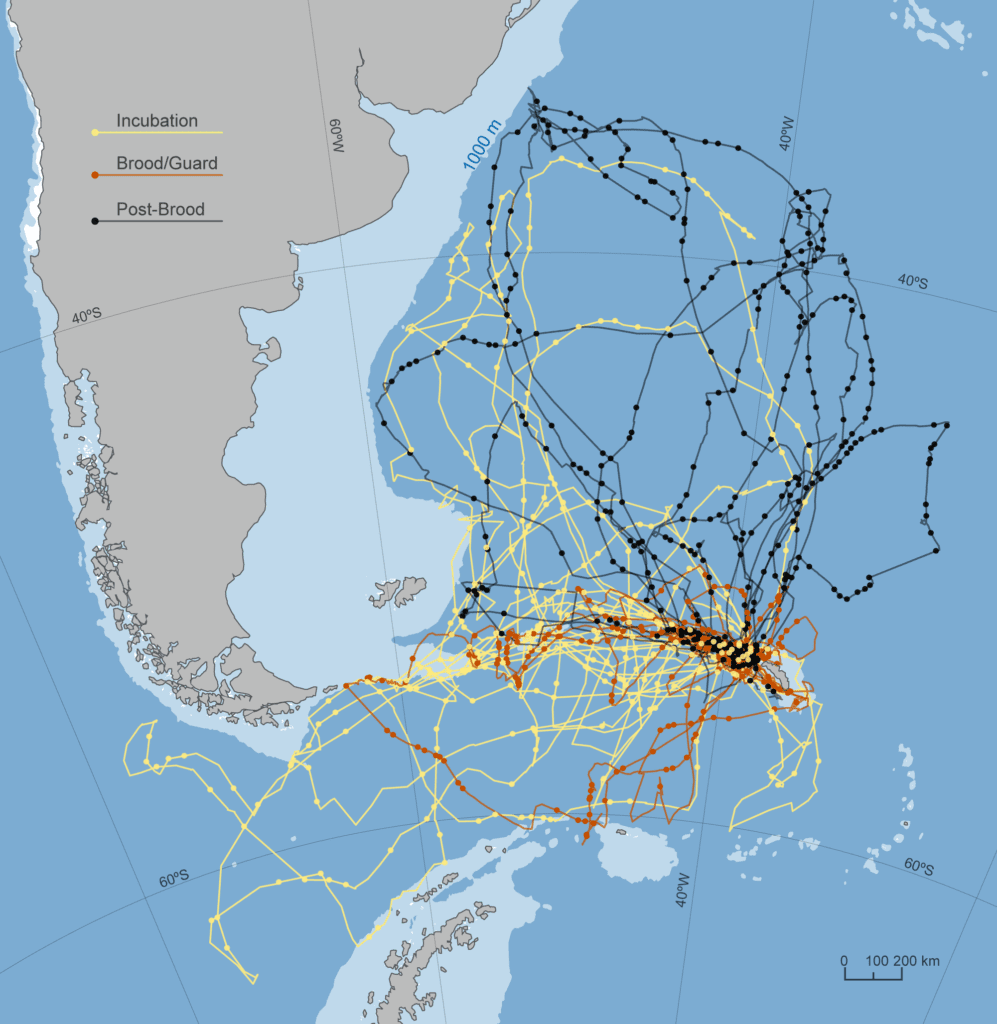
Trajectories of breeding wandering albatrosses nesting on South Georgia Island in the South Atlantic. These birds are highly adapted to long-distance soaring flight assisted by a wingspan of up to 11 feet--the largest known of any living bird. They use the winds to soar thousands of miles seeking food to bring back to nourish their chicks. (Map by Natalie Renier, ©Woods Hole Oceanographic Institution)
For the study, researchers used GPS to track 46 wandering albatrosses during foraging trips the birds made between February to September 2004. The birds were breeding on Bird Island, which is off the northwest tip of South Georgia in the Southern Atlantic Ocean. Wandering albatrosses lack sufficient musculature to sustain continuous flapping flight for long periods of time; however they have a shoulder lock that mechanically holds their wings outstretched so that little energy is expended while soaring, according to the paper.
Since the earliest days of scientific inquiry, the way that many birds are able soar—that is, fly without flapping their wings—has fascinated and perplexed observers, said paper co-author Ewan D. Wakefield , affiliate researcher at the University of Glasgow and postdoctoral research associate at the University of Durham, UK. Wandering albatrosses are particularly remarkable for their ability to soar over the surface of the sea for long periods, covering vast distances, Wakefield said. He added that the physical principles explaining dynamic soaring flight were established over a century ago: Basically, albatrosses swoop up and down between layers of fast and slow moving air near the surface of the sea, gaining airspeed each time they do so.
“However, as our study shows, real-world albatross flight differs considerably from the predictions of simple physical models,” Wakefield said. “On the one hand, our GPS-tracking data show that they can and do fly in lighter winds than dynamic soaring models say should be possible. We suspect that this is because they can also fly by surfing updrafts created by the large waves that constantly surge around their Southern Ocean home. On the other hand, the upper limit of albatrosses' airspeed that we measured is much slower than physics predicts. We think that this is because albatrosses need to keep the forces on their wings within tolerable limits. After all, they're made from bone and muscle, not aluminum and titanium. Our study therefore points to ways in which theoretical models need to be refined to capture more faithfully the amazing complexity and beauty of albatross flight.”
Richardson recalled being entranced by wandering albatrosses ever since he observed them during a 1997 oceanographic cruise in the South Atlantic Ocean. “We were steaming upwind at 15 knots, pounding into waves, and these albatrosses caught up to us from astern and were cruising around and having a grand old time,” Richardson said. “I sat there for hours watching these birds in amazement, and wondering how they could fly like that. Now we are learning more about how they do it.”
Funding for this research was provided by the Woods Hole Oceanographic Institution emeritus fund and the UK Natural Environment Research Council.
Authors: Philip L. Richardson 1 and Ewan D. Wakefield 2
Affiliations:
1 Department of Physical Oceanography, Woods Hole Oceanographic Institution, Woods Hole, MA, USA
2 Institute of Biodiversity, Animal Health and Comparative Medicine, University of Glasgow, Glasgow, UK
About Woods Hole Oceanographic Institution
The Woods Hole Oceanographic Institution (WHOI) is a private, non-profit organization on Cape Cod, Massachusetts, dedicated to marine research, engineering, and higher education. Established in 1930, its primary mission is to understand the ocean and its interaction with the Earth as a whole, and to communicate an understanding of the ocean’s role in the changing global environment. WHOI’s pioneering discoveries stem from an ideal combination of science and engineering—one that has made it one of the most trusted and technically advanced leaders in basic and applied ocean research and exploration anywhere. WHOI is known for its multidisciplinary approach, superior ship operations, and unparalleled deep-sea robotics capabilities. We play a leading role in ocean observation and operate the most extensive suite of data-gathering platforms in the world. Top scientists, engineers, and students collaborate on more than 800 concurrent projects worldwide—both above and below the waves—pushing the boundaries of knowledge and possibility. For more information, please visit www.whoi.edu
Key takeaways:
- By analyzing GPS tracks of wandering albatrosses, researchers have found that the birds’ airspeed increases with wind speed up to a maximum of 20 meters per second (45 miles per hour).
- Researchers developed a model of dynamic soaring, which predicts that the birds could fly much faster than 20 meters per second (m/s). However, researchers hypothesize that the birds limit their maximum across-wind airspeeds to about 20 m/s in higher wind speeds (and greater wind turbulence), probably to keep the aerodynamic force on their wings during dynamic soaring well below the mechanically-tolerable limits of wing strength.
- The paper concludes that the birds limit airspeed by adjusting the turns in their trajectories to be around 60° and that in low winds the birds exploit updrafts over waves to supplement dynamic soaring.
- Although a theoretical model predicted that the minimum wind speed necessary to support dynamic soaring is greater than 3 meters per second (m/s), GPS-tracked albatrosses were observed in flight at wind speeds as low as 2 m/s. Researchers hypothesize at these very low wind speeds, wandering albatrosses fly by obtaining additional energy from updrafts over water waves.
- The study points to ways in which theoretical models need to be refined to capture more faithfully the amazing complexity and beauty of albatross flight.

- THE PROBLEM
- THE SOLUTION
- ABOUT THE PROJECT
- ABOUT THE ISLAND
- IN THE NEWS
- NEWSLETTERS
- PUBLICATIONS
- MFM PROJECT TEAM
- MFM PROJECT MANAGEMENT COMMITTEE
- MFM PROJECT STEERING COMMITTEE
- MFM NPC BOARD
- MFM NPC AUDIT & RISK COMMITTEE
- MFM NPC FUNDRASING COMMITTEE
- MFM PROJECT COMMUNICATIONS COMMITTEE
- MFM PROJECT PATRONS
- DONOR HONOUR ROLL
- Donor Privacy Policy

Featuring Marion Island’s albatrosses and petrels affected by mice and their photographers: the Wandering Albatross by Alexis Osborne
Above Picture: An old adult male Wandering Albatross on Marion Island
NOTE: This is the first in an occasional series that aims to feature photographs of those breeding seabirds of Marion Island which are being attacked by mice, along with information about their photographers. The aim is to introduce the photographers (and the birds) to readers in such a way as to explain the passion that they, and all the members of the MFM Team, feel for the island. Here, Alexis Osborne writes about his sojourns on two sub-Antarctic islands which included studying moult in the globally Vulnerable Wandering Albatross Diomedea exulans on Marion towards his M.Sc. degree.

Alexis Osborne approaches a non-breeding Wandering Albatross under research permit
I started my journey to my first sub-Antarctic island in 2014, not knowing that this was going to be the start of big things. As a young boy growing up in the arid Northern Cape of South Africa, I never dreamt of travelling at sea for days on end, let alone living on islands for major parts of my life. My first voyage was to Marion Island where I spent a year and where I also fell in love with seabirds. On Marion I was largely responsible for setting up a project examining moult patterns in Wandering Albatrosses and Northern Giant Petrels Macronectes halli . Upon my return to South Africa I obtained a B.Sc. Honours in Biological Sciences at the University of Cape Town and followed this with a M.Sc. through the university’s FitzPatrick Institute of African Ornithology that was based on the moult study I had undertaken at Marion Island. During 2017 I had the opportunity to return to Marion for a month to collect more data for my M.Sc. project and later that year took part in the annual relief voyage to Gough Island . I then spent the 2017/18 summer in Antarctica conducting seabird monitoring work with the Department of Forestry, Fisheries and the Environment ( DFFE ).
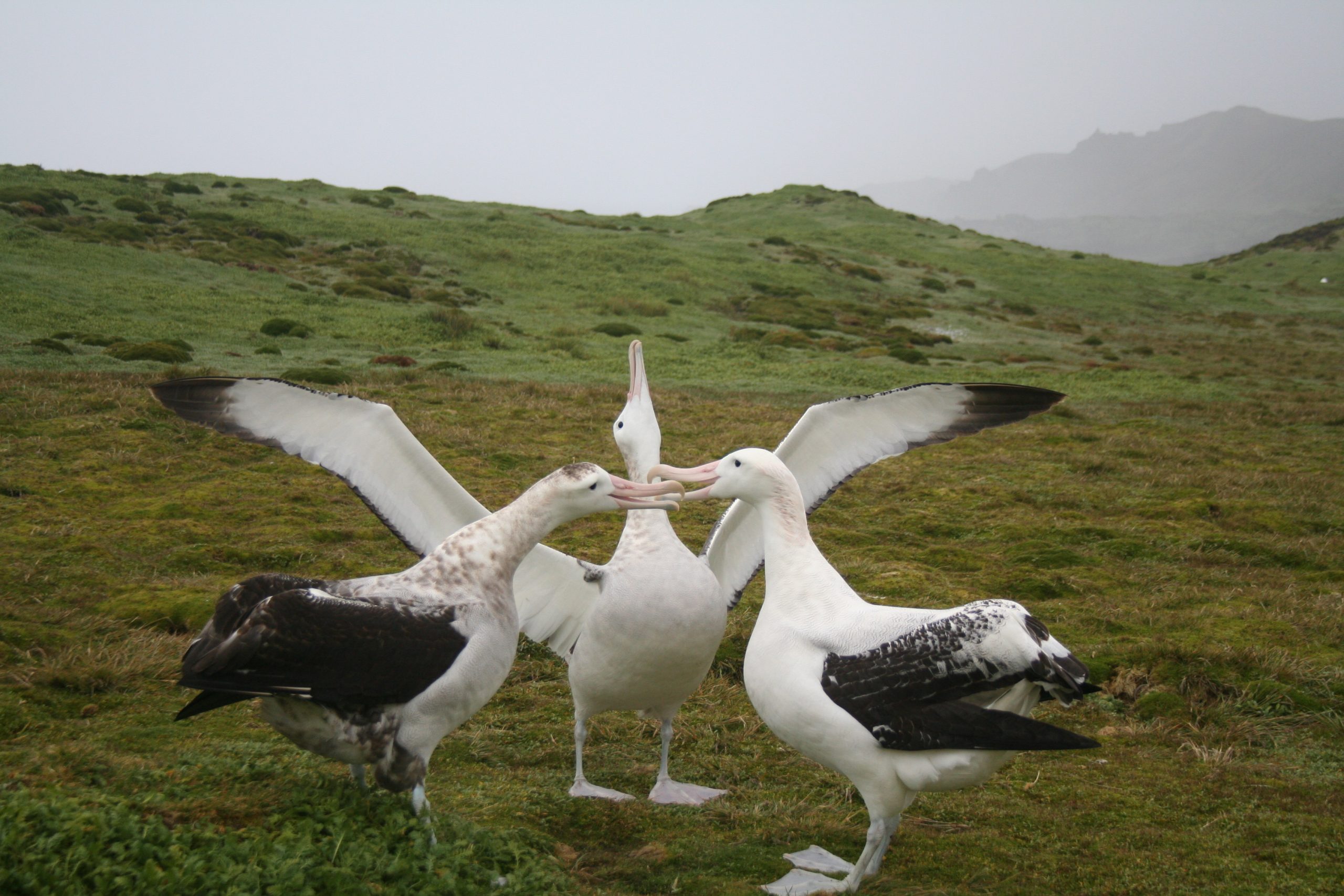
Young Wandering Albatrosses display in a group, known as a ‘gam’
During my visit to Gough Island I knew immediately I wanted to stay for longer and when the opportunity presented itself in 2018 to return to Gough Island for a year, I grabbed it with both hands. I was employed by the Royal Society for the Protection of Birds (UK’s BirdLife partner) as a seabird biologist to monitor the island’s threatened birds. I enjoyed my time on the island so much that I decided to extend my stay for another year. In 2020 I was awarded my M.Sc. degree, publishing my first paper from the thesis this year.

A breeding pair: the larger and whiter male (left) incubates the single egg
In 2020 I returned to South Africa for a few months before heading back to Gough to be part of the international team of experts working to eradicate invasive House Mice Mus musculus from the island as part of the Gough Island Restoration Programme ( GIRP ). Being part of the mouse eradication team has been such an amazing experience, just to be able to see no mice on the island has been the best feeling and I can’t wait for the rest of the wildlife to experience this and – if the eradication effort is proven successful in two years’ time – to see the island restored to what it was like before the mice arrived.

The sun sets on a pair of Wandering Albatrosses on Marion Island. Photographs by Alexis Osborne
Next, we will be focusing our attention via the Mouse-Free Marion Project back to Marion Island where we hope that species such as the Wandering Albatross that I studied will also be able to experience a mouse-free environment.
Selected Publications:
Dilley, B.J., Hedding, D.W., Henry, D.A.W., Rexer-Huber, K., Parker, G.C., Schoombie, S., Osborne, A. & Ryan, P.G. 2019. Clustered or dispersed: testing the effect of sampling strategy to census burrow-nesting petrels with varied distributions at sub-Antarctic Marion Island. Antarctic Science 31: 231-242 . [ click here ]
Dilley, B.J., Schoombie, S., Stevens, K., Davies, D., Perold, V., Osborne, A., Schoombie, J., Brink, C.W., Carpenter-Kling, T. & Ryan, P.G. 2018. Mouse predation affects breeding success of burrow-nesting petrels at sub-Antarctic Marion Island. Antarctic Science 30: 93-104 . [ click here ]
Osborne, A. 2020. Understanding Moult Patterns in Albatrosses and Petrels breeding on Marion and Gough Islands . MSc thesis. Department of Biological Sciences, University of Cape Town. 82 pp. [ click here ]
Osborne, A. & Ryan, P.G. 2021. Using digital photography to study moult extent in breeding seabirds. Ostrich doi10.2989/00306525.2021.1897699 plus two photographs in supplementary information . [ click here ]
Ryan, P.G., Ferreira, C., Perold, V., Osborne, A. & Jones, C.W. 2015. Failure to launch: evidence of protracted parental care in albatrosses. Seabird 28: 48-51 . [ click here ]
Alexis Osborne, 14 September 2021
Share This Content!
Related posts.

The Mouse-Free Marion Project recently hosted two visits by its supporters

The Mouse-Free Marion Project Sponsor a Hectare initiative reaches a milestone on World Albatross Day

SANAP Principal Investigator Pierre Pistorius is a supporter of the Mouse-Free Marion Project

12-year-old Romario Valentine supports the Mouse-Free Marion Project’s Rhodes Trail Run Appeal

Marion Island researchers, Stefan and Janine Schoombie, are valued supporters of the Mouse-Free Marion Project
- Deutsch ( German )
- Español ( Spanish )
- 日本語 ( Japanese )
- Français ( French )

- Search forums
- Latest Images
- Popular Images
Follow along with the video below to see how to install our site as a web app on your home screen.
Note: This feature currently requires accessing the site using the built-in Safari browser.
- Presentation Forums
- Wildlife Photography (Presentation)
Wandering Albatross
- Thread starter Roaring 40s
- Start date Mar 29, 2021
If you would like to post, you'll need to register . Note that if you have a BCG store account, you'll need a new, separate account here (we keep the two sites separate for security purposes).
Roaring 40s
Well-known member.
- Mar 29, 2021
- Post score: 10
NorthernFocus
Only ever seen these from long range. Big birds to be sure.
Ziggy said: Taken in the Southern Ocean south of Australia, this species has a wingspan up to 3.5m, the largest of any bird. View attachment 16481 The scalloping in the white plumage indicates a younger bird: View attachment 16482 Feeding on a fish frame thrown out by the ship's crew. In the background is a Shy Albatross (imm.) I think. View attachment 16483 Click to expand...
- Post score: 4
Yellowboard
- Post score: 1
Awesome! Great to be able to get up close to these birds in the wild...
- This site uses cookies to help personalise content, tailor your experience and to keep you logged in if you register. By continuing to use this site, you are consenting to our use of cookies. Accept Learn more…

- Bahasa Indonesia
- Eastern Europe
- Moscow Oblast
Elektrostal
Elektrostal Localisation : Country Russia , Oblast Moscow Oblast . Available Information : Geographical coordinates , Population, Area, Altitude, Weather and Hotel . Nearby cities and villages : Noginsk , Pavlovsky Posad and Staraya Kupavna .
Information
Find all the information of Elektrostal or click on the section of your choice in the left menu.
- Update data
Elektrostal Demography
Information on the people and the population of Elektrostal.
Elektrostal Geography
Geographic Information regarding City of Elektrostal .
Elektrostal Distance
Distance (in kilometers) between Elektrostal and the biggest cities of Russia.
Elektrostal Map
Locate simply the city of Elektrostal through the card, map and satellite image of the city.
Elektrostal Nearby cities and villages
Elektrostal weather.
Weather forecast for the next coming days and current time of Elektrostal.
Elektrostal Sunrise and sunset
Find below the times of sunrise and sunset calculated 7 days to Elektrostal.
Elektrostal Hotel
Our team has selected for you a list of hotel in Elektrostal classified by value for money. Book your hotel room at the best price.
Elektrostal Nearby
Below is a list of activities and point of interest in Elektrostal and its surroundings.
Elektrostal Page

- Information /Russian-Federation--Moscow-Oblast--Elektrostal#info
- Demography /Russian-Federation--Moscow-Oblast--Elektrostal#demo
- Geography /Russian-Federation--Moscow-Oblast--Elektrostal#geo
- Distance /Russian-Federation--Moscow-Oblast--Elektrostal#dist1
- Map /Russian-Federation--Moscow-Oblast--Elektrostal#map
- Nearby cities and villages /Russian-Federation--Moscow-Oblast--Elektrostal#dist2
- Weather /Russian-Federation--Moscow-Oblast--Elektrostal#weather
- Sunrise and sunset /Russian-Federation--Moscow-Oblast--Elektrostal#sun
- Hotel /Russian-Federation--Moscow-Oblast--Elektrostal#hotel
- Nearby /Russian-Federation--Moscow-Oblast--Elektrostal#around
- Page /Russian-Federation--Moscow-Oblast--Elektrostal#page
- Terms of Use
- Copyright © 2024 DB-City - All rights reserved
- Change Ad Consent Do not sell my data

IMAGES
COMMENTS
Portraits. Commercial. "The bird which made the breeze to blow," the Wandering Albatross has the longest wingspan of any bird on the planet.
About — Wandering Albatross Photography. Hi there. Nice to meet you! I'm Ginny. I first began wielding a camera in high school and I've been hooked on storytelling through a lens ever since. I love working with people (that's you).
Ginny Emery is a photographer based in Helena, Montana. With over a decade of professional photography experience, Ginny is well-versed in many types of photography including weddings, events, portraiture, marketing and journalism. Photo by Skye Hatten
Families. Couples. Seniors. Amazing Humans. View fullsize. View fullsize
Wandering Albatross Photography, Helena, Montana. 549 likes · 13 talking about this. Professional Photography
Welcome to the Wandering Albatross Photography image gallery & sales site. Ginny Emery is a photographer based in Helena, Montana. With over a decade of professional photography experience, Ginny is well-versed in. 1825 Golden Street, Helena, MT 59601, United States
762 Followers, 1,293 Following, 273 Posts - Ginny Emery (@wanderingalbatrossphotography) on Instagram: "Montana-based professional photographer, wandering to anywhere for art's sake."
Wandering Albatross Photography
View wandering albatross photos, license wandering albatross stock pictures, and buy stunning wandering albatross prints by award winning professional photographer Jon Cornforth. To license an image for editorial or commercial use, click on the License Image button and fill out the form. To purchase a fine art print, select your image size and ...
The Wandering Albatross may spend several days following a ship, gliding effortlessly on long slender wings, in all but the calmest winds. Birds will readily scavenge from fishing boats and the surface of the water, but squid and fish are the preferred food.
Wandering albatross, on nest and the Prion Island colony. The wandering albatross has the largest wingspan of any living bird, with the wingspan between, up to 12' from wingtip to wingtip. It can soar on the open ocean for hours at a time, riding the updrafts from individual swells, with a glide ratio of 22 units of distance for every unit of drop.
On his first-ever trip to South Georgia, Benn Berkeley—Expedition Filmmaker and one of Silversea's Onboard Photographers—came eye-to-eye with the proud owner...
A: The prices you see are a reflection not only of the time and hard work I put in during your photo session, but also the hours I invest in editing and Fine-Tuning your images. Just as photographers used to spend hours perfecting images in a darkroom, I meticulously edit and refine each image to vividly and elegantly tell your story.
1/2000th second is a good place to start. Use a continuous auto-focus mode to track the bird, and aim to focus on the eyes. Select your 'zone' for a nice composition before you begin shooting. Look at where the birds are flying, and establish an area where the background is pleasing and the light is good.
Photographer and amatuer Filmmaker. Lover of the wild and Animals. Currently residing in Johannesburg, South Africa looking for the next adventure for the list. I am currently studying Film and Production, interested to do some work with people.
Woods Hole, Mass. — Wandering albatrosses, which are an iconic sight in the Southern Ocean, are highly adapted to long-distance soaring flight. Their wingspan of up to 11 feet is the largest known of any living bird, and yet wandering albatrosses fly while hardly flapping their wings.
Above Picture: An old adult male Wandering Albatross on Marion Island NOTE: This is the first in an occasional series that aims to feature photographs of those breeding seabirds of Marion Island which are being attacked by mice, along with information about their photographers. The aim is to introduce the photographers (and the birds) to readers in such a way as to explain the passion that ...
Taken in the Southern Ocean south of Australia, this species has a wingspan up to 3.5m, the largest of any bird. The scalloping in the white plumage indicates a younger bird: Feeding on a fish frame thrown out by the ship's crew. In the background is a Shy Albatross (imm.) I think.
In 1938, it was granted town status. [citation needed]Administrative and municipal status. Within the framework of administrative divisions, it is incorporated as Elektrostal City Under Oblast Jurisdiction—an administrative unit with the status equal to that of the districts. As a municipal division, Elektrostal City Under Oblast Jurisdiction is incorporated as Elektrostal Urban Okrug.
Elektrostal Geography. Geographic Information regarding City of Elektrostal. Elektrostal Geographical coordinates. Latitude: 55.8, Longitude: 38.45. 55° 48′ 0″ North, 38° 27′ 0″ East. Elektrostal Area. 4,951 hectares. 49.51 km² (19.12 sq mi) Elektrostal Altitude.
Elektrostal is a city in Moscow Oblast, Russia, located 58 kilometers east of Moscow. Elektrostal has about 158,000 residents. Mapcarta, the open map.
Fly message, fly! (Thanks for reaching out, I'll be in touch soon.) About Contact Follow Contact Follow
State Housing Inspectorate of the Moscow Region Elektrostal postal code 144009. See Google profile, Hours, Phone, Website and more for this business. 2.0 Cybo Score. Review on Cybo.